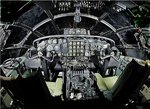GrauGeist
Generalfeldmarschall zur Luftschiff Abteilung
I'm not sure why there is so much debate as to the possibility of something going wrong while in service. There's been countless mishaps with reliable and proven aircraft that is the result of standard ops...you just can't have perfect conditions 100% of the time, and surely not during a wartime setting.
Yes, there's the chance of floating debris, yes there's a chance of rough seas, yes there's a chance of bad weather, yes there's the chance of attack by enemy aircraft, yes to all of the above.
Let's consider how many aircrews operating traditional (land/carrier based) aircraft (bomber/transport/fighter/observation) were lost due to malfunction, collision, friendly fire poor weather conditions over the duration of the war. We won't factor in enemy encounters. But if one person was lost, that's unacceptable, but in reality, the figure is way far and above that. That is an uncomfortable truth of war.
Of all the flying boats that operated in both theaters and both sides, few were lost to floatsam. One Bv222 was lost when it struck a submerged wreck as it was landing in the Med. Other than that, I don't recall hearing many reports of similiar losses, though that's not to say it didn't happen. But that was not a major issue. More flying boats were lost to enemy attack than anything.
As far as the H-4's flight, I also believe that Hughes did that last run on purpose. He let off some reporters prior to the last taxi, yet some remained aboard and I suspect it was more than coincidence.
And just for the record, there are two Martin Mars left, that actively fly fire bombing missions, the "Hawaii" and the "Caroline" out of Canada.
Yes, there's the chance of floating debris, yes there's a chance of rough seas, yes there's a chance of bad weather, yes there's the chance of attack by enemy aircraft, yes to all of the above.
Let's consider how many aircrews operating traditional (land/carrier based) aircraft (bomber/transport/fighter/observation) were lost due to malfunction, collision, friendly fire poor weather conditions over the duration of the war. We won't factor in enemy encounters. But if one person was lost, that's unacceptable, but in reality, the figure is way far and above that. That is an uncomfortable truth of war.
Of all the flying boats that operated in both theaters and both sides, few were lost to floatsam. One Bv222 was lost when it struck a submerged wreck as it was landing in the Med. Other than that, I don't recall hearing many reports of similiar losses, though that's not to say it didn't happen. But that was not a major issue. More flying boats were lost to enemy attack than anything.
As far as the H-4's flight, I also believe that Hughes did that last run on purpose. He let off some reporters prior to the last taxi, yet some remained aboard and I suspect it was more than coincidence.
And just for the record, there are two Martin Mars left, that actively fly fire bombing missions, the "Hawaii" and the "Caroline" out of Canada.
Last edited:

![Hughes_H4_Flight_Deck[600].jpg](/forum/data/attachments/140/140821-e0f4a0a9be6b811be894b5bfd2fb74c2.jpg)
